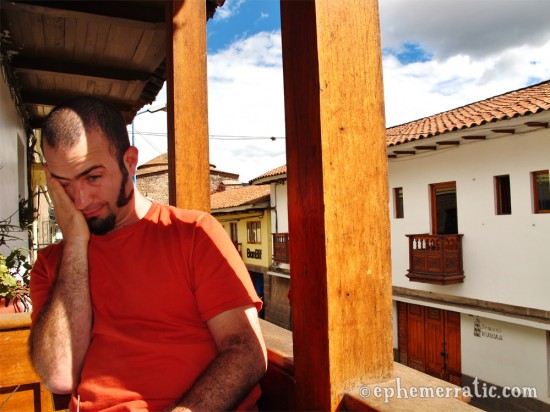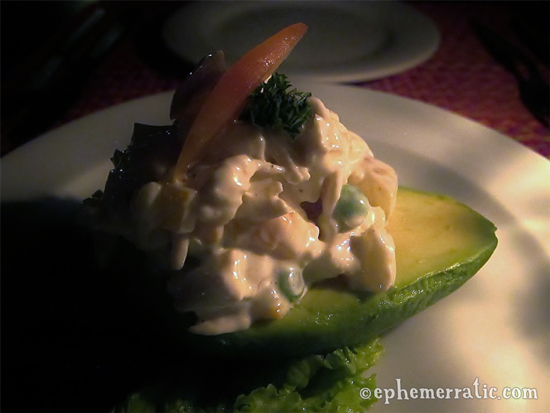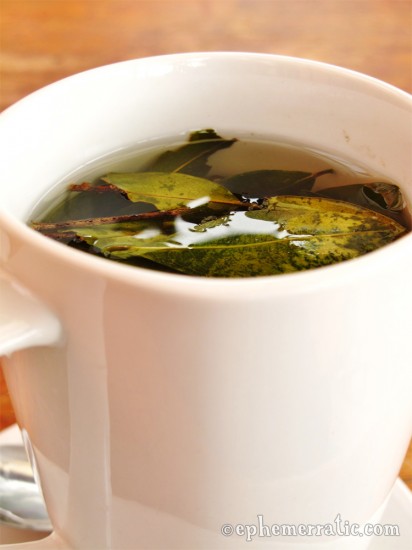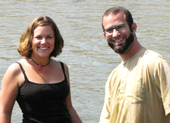Soroche suffering: How to prevent altitude sickness in Peru
After visiting Cusco, Peru and the rest of the Sacred Valley, I am now all too aware of the fragility of human beings. Specifically this human being.
I’m a sea-level creature — childhood through collegehood spent on the New York coast, and adulthood ever at eye-level with the Pacific Ocean. In the Sacred Valley I was ever aware of my blood and breath. We’re little more than slightly porous bags of fluids and innards, with some structural framework to keep us upright. Change our external environment to an extreme and things get ugly.

Todd getting walloped by a moment of altitude sickness in Cusco, Peru.
Peru’s Sacred Valley wavers from a little under to a little over 2 miles in elevation, so visiting means risking soroche, or high altitude sickness. My and Todd’s altitude sickness symptoms were mild but persistent. My strangest symptom: I was never hungry. Though a budget saver, it meant I was underwhelmed by and sometimes even indifferent to the local Peruvian food, a “meh” state of being that I find torturous. My most frustrating: I had a constant background headache that would swell and wash over me whenever I did anything slightly exerting.
We found that most advice on how to prevent or cure altitude sickness is flawed. So we ignored most of it and suffered a bit in consequence.
How to avoid altitude sickness (and why we ignored most advice)
Acclimatize by climbing slowly to altitude.
It’s a very long bus ride to the Sacred Valley and Cusco from most other regions in Peru. Over a day and night and part of another day, you adjust to the altitude as you wind ever up Peru’s deadly mountain roads in a poorly maintained bus. Even if you’re not susceptible to motion sickness, odds are the person behind you is and will be wetly hurling into, if you’re lucky, a bag, or if you’re unlucky, anywhere and everywhere.
Since it was just a little more money and 20 hours less time, we decided to fly to Cusco from Lima, so we didn’t have a chance to slowly acclimatize. I had a moment of vertigo on landing, but it passed.
Avoid physical activity for the first few days.
Cusco is a big city smooshed into a tiny Andean valley. The result: it’s all hills, with streets so steep that many sidewalks are actually staircases. In such a terrain, avoiding physical activity would mean sitting around doing little, which is the exact opposite of how we want to spend our precious vacation time. I’d rather have a slight headache than be bored. If we’d sat around, we would have missed Cusco’s secret Incan slide.
Stay hydrated.
At high altitudes, your lungs slough off moisture faster, so you need to drink more water. A lot more water. About three liters of water each a day. And yet…
Don’t carry too much weight around.
If you remember your high school science, three liters of water weighs about 6.6 pounds (3 kilograms). If you’re staying hydrated this extra weight is either in your bag or in your belly. Staying hydrated and limiting the weight you carry is advice at odds.
Eat light.
Since the altitude in Cusco made us lose our appetites, this was the one piece of advice we could easily follow.

Palta Rellena (stuffed avocado) at Pacha Papa restaurant makes a nice, light meal.
Take legal drugs.
Diamox, Acetazolamide, or other drugs that abate altitude sickness usually need to be started before you get to high altitude. We decided to buy the drugs in Lima, where they’d be cheaper than notoriously overpriced prescriptions (and the doctor co-pay) in the U.S. Though we purchased the right pills, the sea-level pharmacists told us a too-low pill popping frequency. Taking altitude sickness drugs might work if you get better medical advice than we did.
More than Diamox, coca leaves, or even sitting still, a couple of Advil doused my headache, and studies have shown that ibuprofen also calms altitude-caused nausea.
Take illegal drugs.
Drug Enforcement Agency be dammed, this was the advice we most eagerly followed. Tasty and potentially prophylactic, we consumed coca in as many ways and as often as it was offered — tea, candy, leaves and even as a cocktail mixer (perhaps the last is ill-advised). While mate de coca was a lovely excuse for a relaxing afternoon tea break, coca seemed to have little effect on our altitude sickness symptoms.

A mug of mate de coca.
Don’t drink alcohol.
Peru is to pisco sours as Italy is to wine. Avoiding pisco sours — or the other local adult beverage, chicha de jora, a corn beer — was something we couldn’t get our hedonistic heads around. Instead, we ordered pisco sour de coca whenever it was an option, in hopes that one ingredient would counteract the other.
It seems that rationalization should be listed as one of the symptoms of altitude sickness.
(All joking about our half-assed efforts aside, altitude sickness can be a serious health problem for some people, with fainting spells, dehydration, low blood/oxygen levels, and though rare, even more severe symptoms. If you are at a high altitude and feel ill, see a doctor.)


Jason suffered greatly from altitude sickness while in Cusco. We found a pill called Soroche…I didn’t know it meant high altitude. Anyway, I think it had caffeine and ibuprofen in it which, along with copious amounts of coca tea, seemed to help quite a bit.
I’m sorry to hear that Jason got walloped by the altitude so badly! We had the pills but got bad advice about how much to take. And we wanted to avoid all that caffeine too, since that’s what keeps a lot of people up at night. Some folks are just prone to soroche suffering.
Managed to not experience any altitude sickness symptoms while visiting Peru thanks to some great tips from our guide. Arrived in Cusco and immediately heading out of town to Ollantaytambo which is at a lower altitude. Then visited Machu Picchu and then in a few days headed back to enjoy Cusco. Combining those few days of acclimatization along with no alcohol and eating light (including no meat) before heading back to Cusco definitely helped. Had taken some medication along from my doctor but never needed it. Can’t wait to visit Peru again sometime!
We were wiling to trade eating meat and drinking alcohol for a headache here and there, but your way sounds much smarter. We tried the Ollantaytambo and Machu Picchu acclimatization, but the return to Cusco still kicked our ass. Apparently altitude sickness is a very personal thing. I’ll stick to sea level, but look forward to a return to Peru, altitude be dammed!
my husband and I are travelling to Peru and other countries in SA in October. We know that altitude sickness is a possibility- you mentioned taking meds that would help if you had known the correct dose- can you provide that information to us. Also when (in days prior to arriving at the high altitude site) should one start taking the medications.
thanks
Well, first I have to say I’m not a doctor so please don’t take anything I offer as medical advice! Especially since soroche pills (acetazolamide, diamox) can interact with other medications and can exacerbate existing medical conditions.
But, my experience was that you take diamox for a couple days before you get to the high altitude, and then continue taking it as long as you are at high altitude, at the dosage prescribed. Todd and I were able to pick up soroche pills from a pharmacy in Lima without a prescription. But, to do that, you’ll probably need to be conversant in Spanish in order to answer questions about your medical history and understand the instructions.
It’s better to acclimatize if you can. We didn’t do a good job at that and regretted it, even with the soroche pills!
I’ve just stumbled across your stories while searching for some information on altitude sickness. Superbly wrirren and most enjoyable. Well done!!. My wife and I are travelling to Cusco in April and there are two issues that kinda concern me. Altitude sickness – your prescription of pisco sour de coca will sort that. The other concern is security. There are many stories of tourists being attacked etc. Have you any advice?
By the way, I hiked up the Mount Etna volcano in Sicilly which was smoking after a recent eruption!! – well worth the visit – but thats another story.
Ha! Yes, pisco de sour de coca is both the best and worst advice for dealing with altitude sickness in Peru. It’s probably best to avoid alcohol on your first day in Cusco, but by your third day you could be able to handle a couple of brunch cocktails!
I felt pretty safe in Cusco. My feeling of safety though is largely based on whether there are people out and about. In the parts of Cusco that visitors see, there were plenty of folks out and about, day and night. As with anywhere in the world, leave your valuables at home, keep those you do bring (camera) safely on your person, be aware of your surroundings, and avoid the touts.
Also, there are a lot of “Tourist Police” in Cusco. I think, however, their presence was to give the impression of safety rather than enforce safety. I never saw them actually do anything besides stand around. In a smaller plaza one day there was a loud, drunk, and belligerent local shouting at everyone, though never getting more than within 10 feet of anyone (more sad than dangerous). The Tourist Police officer just sighed and then turned his back to the drunk. Not helpful.
Hiking smoking Etna? Jealous!
Just wanted to add a bit, about the meat. People often forget that they consume a lot of meat, thinking it’s just food. And locals eat too much meat, like, for breakfast you get meat soup and huge pieces if chicken or beef. If you don’t track it, it can make altitude sickness even deadly, without notice. Try to buy fruits like grapes, pears, plus local breads, cream buns, plus local cheese is better than too much meat.